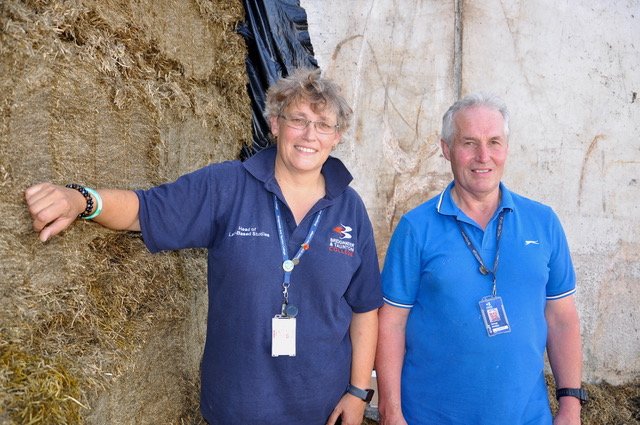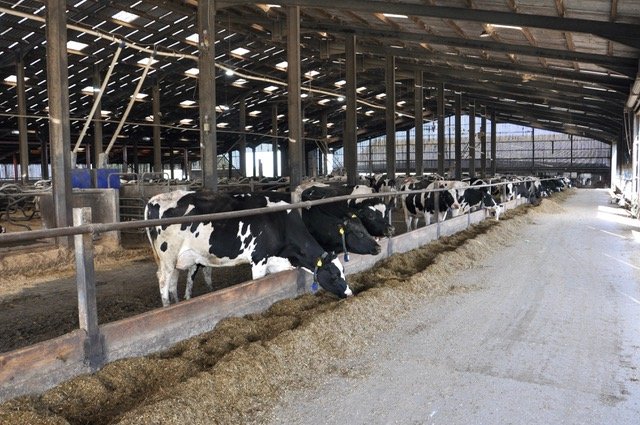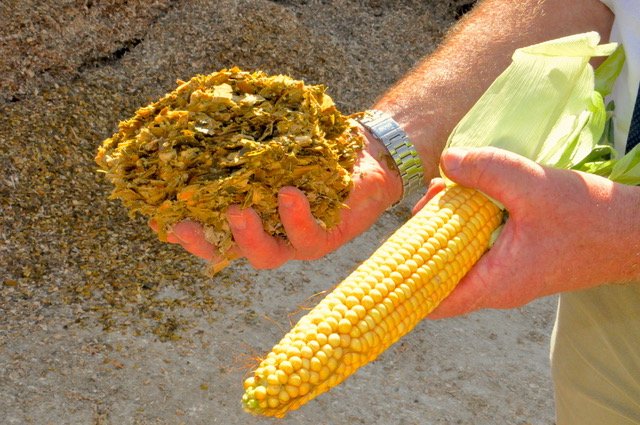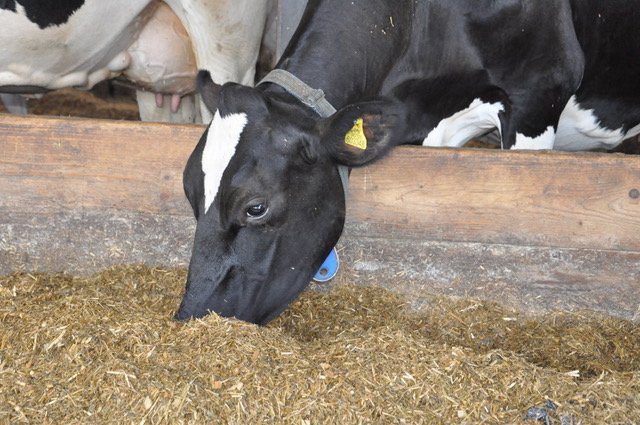As well as being a teaching resource, the dairy unit of Bridgwater and Taunton College has to be a viable commercial farm. So good silage for the year-round housed herd is key.
Head of land-based studies at Bridgwater and Taunton College, Claire Winson, and assistant farm manager, George Stickley, have a clear goal.
They want to run the 200-strong milking herd of pedigree Somerset Holsteins at the college’s Cannington campus near Bridgwater, Somerset, as sustainably and self-sufficiently as possible.
As a year-round housed, year-round milked herd, silage is crucial. Milk is sold into the liquid market, with average yields of 10,500 litres/cow at 3.43% protein and 4.12 - 4.15% butterfat. But as well as conserving as much silage as possible to meet the herd’s needs from the 160 ha of land available, silage quality is also paramount to maximise milk from forage.
“We’re driven by increasing milk from forage, but also by making sure we have enough silage in store,” explains Claire. “We’re aiming to be self-sufficient and have quality. The farm is a teaching resource for students, but we also have to run it on a commercial basis.
“We can’t educate the next generation of farmers unless we manage our own farm well. Forage is a linchpin for the dairy herd. One wrong move making silage and we could scupper that.
“Every year we sit down and go through the budget forensically and give forecasts. Over the last two years huge strides have been made by refocusing and slimming down.”
Key changes have included moving from three grass silage cuts a year to a multi-cut system, increasing the maize area by 40% to 28 ha, investing in the college’s own silage machinery, and reducing cow numbers. Close attention to detail is also paid to each silage-making step, including the introduction of Ecosyl additives as an integral part of enhancing conservation.
Rotational reseeding is also used to improve grass productivity, and westerwold ryegrass is planted to boost forage supplies after maize harvest.
The year-round TMR fed to milking cows comprises a forage mix of 50% grass silage and 50% maize silage, plus a protein blend and minerals. Wholecrop cereal silage, produced from 10-20 ha of winter wheat and 6 ha of spring barley grown on the farm, is included in place of maize in the youngstock TMR to help growth rates, and added for the milkers if maize silage is short.
“I realise how important good silage is from my previous role as the college’s head herdsman,” explains George. “The more milk from forage, the better the cost ratio. If not, we have to buy in concentrate. We’ve just started to do costings for milk from forage.
“Cow numbers have been brought down to 200 from 320. The farm wasn’t big enough and had to rent buildings off site and buy in feed. We decided to bring cow numbers to a more sustainable level. We’re trying to be sustainable for forage on the farm’s own land.
“Our aim is for four grass silage cuts a year for quality and volume, or possibly five – taking the first cut in late April or early May, with the last cut normally at the end of September. Some bales are also made between cuts.
“Cows are in two groups and we always have high-yielding cows as we’re year-round calving. We’d like to increase the amount of maize in the ration but need to make it last. Being year-round housed, having enough silage is crucial, as is consistent quality,” he adds.
To protect grass silage quality, wilting is adapted to the weather and time of year, rather than using a fixed regime. First cut in 2023 was tedded, but second and third cuts could be harvested dry enough without tedding. The farm has its own spreader mower and aims to ensile grass at 29-30% dry matter (DM), with Ecosyl 100 additive used on this and Ecocool additive used for drier grass, maize and wholecrop cereal silages.
“We’ve been using these additives for quality and consistency for two years,” George explains. “Quality has definitely gone up since using them, and with how we make the silage. Maize is not heating and the wholecrop has been fantastic where Ecocool has been used.”
Volac silage expert, Ken Stroud, who has been helping with the college’s silage conservation strategy, stresses the importance of choosing the correct additive for the forage type and its %DM. Improving the fermentation is the key aim with most grass silage, he says. But for silages at increased risk of losses from heating, such as higher %DM grass, maize and wholecrop, then targeting both fermentation and heating (aerobic spoilage), by using a dual-acting additive such as Ecocool, should be the priority, he maintains.
“Making consistently better silage has become particularly important in times of volatile milk and feed prices,” says Ken. “It helps to insulate the farm against external cost pressures because you know you have a quality forage you can bank on.
“Building up stocks of silage also helps to insulate against the effects of unpredictable weather, for example if a cold or dry spring or summer halts grass growth. The prime reason for using an additive might be for better silage quality but conserving extra quantity is also important.”
Illustrating this, Ken says conserving grass with Ecosyl has not only been shown to produce silage of 11.3 ME in trials, compared with 10.6 ME for untreated silage, but also to roughly halve DM losses. When applied to a 1,000 tonne clamp ensiled at 30% DM, he says these results mean having more tonnes of a more nutritious silage available to feed, equivalent to more than 330,000 megajoules of extra homegrown forage energy.
George continues: “With Ken’s help and advice we strive to get the best quality we can. We cut back on the percentage protein content of the blend if the silage quality is good enough.
“When consolidating, I always make sure there are two tractors rolling the clamp all the time and we roll in thin layers.
“We use side sheets for a better seal and always use an oxygen barrier film, pulling the side sheets over the top, then one top sheet weighted with a heavy woven sheet and tyre sidewalls.”
By improving forage, the financial gains made have allowed the farm to invest in other areas, points out Claire, including cow welfare with new fans and lights on a timing system in the sheds.
With the college looking to increase student numbers going forward, there will also be more labour available for silage harvesting, which may allow contractor use to be reduced, although not eliminated, she adds.
“We have invested in our own machinery so the students can work out the cost of running this as if they were contractors,” says Claire.
“Future goals are that we want to make it a closed herd again. And of course we are looking to reduce our carbon footprint – for example we want high yielding cows but also cow longevity.
“We had thought about installing robotic milking, but the farm set-up needs to be relevant and practical, and students have to develop good stockperson skills. They have to understand the animals, so they need to be in the parlour to see the cows.”
College courses
Student courses in land-based studies at Bridgwater and Taunton College span a wide spectrum of subject areas, from apprenticeships through to degree level, says Claire Winson, with 370 further and higher education students plus 120 agricultural apprentices. Students also include those from non-farming backgrounds looking to gain experience in a real farm setting, Claire adds.
Looking to improve your silage? Incorporating a tried-and-tested silage additive into your strategy is crucial. Explore our website and find out more.








